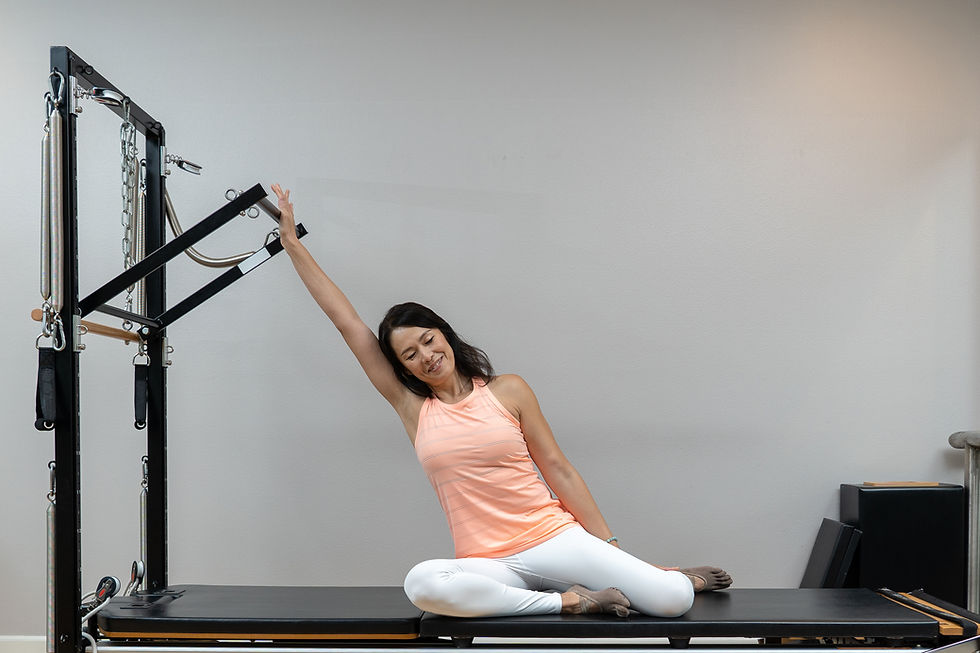What is Pilates
- Mutlu Akgun

- Jun 29, 2021
- 3 min read
Updated: Aug 8, 2021

Pilates is an exercise method created by Joseph Pilates and based on the Six Principles: Centering, Control, Concentration, Flow, Breath, and Precision. In beginning, it was named Contrology or the Art of Control. The method was created in the 1900s and was developed during Joseph Pilates' lifetime. After Joe died in 1967, Contrology was renamed Pilates. Joe believed that you could relieve yourself of chronic pain and imbalances by moving with control, following a certain sequence of exercises, and using your breathing correctly. The method of Pilates focuses on core strength, flexibility, stability, and balance. A regular Pilates practice improves every functional aspect of your life.

Pilates can be done on your own. There is a wide variety of books, DVDs, and online websites with classes you can use. Ideally, Pilates is performed in a studio where you can experience all the apparatus as Joe originally intended, but many gyms offer mat-only classes. Due to its growing popularity, more and more gyms are promoting Pilates equipment, as it improves clients' performance and assists clients experiencing pain, needing one-on-one assistance, or rehabilitating.
A Pilates teacher is not a Physical Therapist unless they receive additional training.

During Pilates training, you will do a wide variety of exercises that seem extremely unusual, such as The Hundred, which requires great deep breaths, arm pumps, and a very balanced, strong body position. The face is a warm-up exercise to ensure blood circulation in your body. You breathe clean air and you breathe stale air. You are working the lungs and diaphragm to their maximum capacity with your transverse abdominals. You're working every single muscle in your body, more specifically the Powerhouse muscles, which can be found in the shoulders and hips. If you act from a strong and resilient Power Center, you will notice many changes in your body over time.

Pilates Mat Classes are only held on a mat, maybe a yoga mat. You can use some small accessories like hand weights or terabands. During these classes, you use your own bodyweight to provide a variety of muscle challenges that help you resist gravity while stretching and strengthening your entire body. This is usually a group lesson where you work in concert with other clients.
Pilates Tower Classes (also known as the Wall Unit) use a variety of springs and rods that create resistance in a variety of movements, some of which you may recognize from mat class, and some very different. Springs act like your extra muscles and create resistance in various directions, helping you build strength, balance, and flexibility. At first, you will find it difficult to control your body and springs, but with regular practice, you will find that you develop more control, strength, and flexibility. This is usually a group classroom setting.

Pilates with equipment such as the Reformer, Cadillac, and Chairs still follow a certain sequence of exercises but presents different challenges to the client as the fixed mat used in Mat Classes and Tower Classes is now smaller and slides on tracks or is angled in springs. thus challenging the customer.
You focus on the same elements as the mat and tower classes, but the exercises on equipment, also known as the jig, require more contrasting and complex movements. For example, the Snake and Twist in the Reformer require you to extend your torso, thus engaging your body in extension and rotation, while bowing using a very specific breath to facilitate proper movement. Depending on how many bows are attached, this exercise may be a little easier or a little harder.

There are many styles of Pilates and different manufacturers of Pilates equipment. You can go to a Pilates teacher or studio and have a very different experience than another teacher or studio. Which style and studio you like is a very personal choice. Feeling supported and satisfied with your experience is crucial to the benefits of Pilates, so wherever you go, you should always leave your class refreshed, perhaps even getting a full body massage. Every cell in your body should feel alert and alive.



















Comments